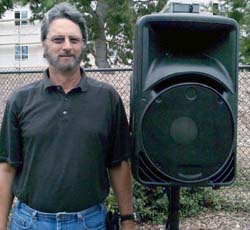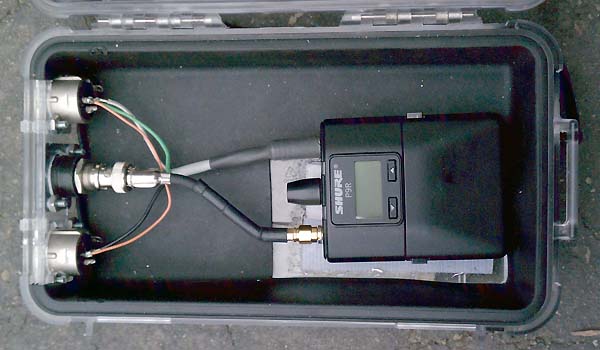As a long-time audio engineer based in Southern California, Paul Beach has earned a reputation for doing things outside the norm, lending his system design and mixing talents to performances on a number of levels, including large-scale outdoor events.
“It seems that I have a knack for working my way into situations that require going beyond what many traditionally expect of technology,” he says. “I may use gear in an unorthodox fashion at times, but the net result always clears a path to the desired endpoint.”
An example of his methodology is an audio rig he’s configured for use with regional fireworks shows that brings choreographed soundtracks to a number of outdoor zones as well as a main viewing area. Ranging in size from 500 to 10,000, crowds gathered for these events sprawl like a serpent over landscapes teeming with buildings, trees, and countless other obstacles standing in the way of providing even or just about any coverage.
“The delayed loudspeaker runs to satellite viewing areas at these shows are just about impossible for cable, mainly because of the labyrinth of routing required to get through all the twists, turns, and other impediments found in the environment,” he explains. Seeking a solution, he decided to chart an signal delivery path to secondary viewing areas directly as the crow flies by going wireless.
Developing The Idea
The wireless delivery design was first enabled a number of years back with the assistance of long-time friends and collaborators Jon Bart of Quiet Voice Audio from nearby Fallbrook, CA, and Mike Cromer of Huntington Beach, CA-based Audio Geer. The two had been encouraging Beach to develop the idea for some time prior to his actual decision to make it reality, and they helped in fulfilling gear list requirements.
He began pursuing his vision for the system about five years ago. It was to be straightforward and bulletproof, requiring little more in the way of hardware than a music source, compact mixing capabilities, loudspeakers, and some sort of wireless transmission/retrieval scheme.
He started with a Shure PSM700 UHF frequency-agile, 2-channel system as the heart of the wireless aspect. While designed for personal monitoring applications using beltpacks and earbuds, in Beach’s mind there was no reason the PSM700 couldn’t be tweaked to serve in a much broader capacity as the foundation of a larger-scale wireless sound reinforcement component.
On the loudspeaker end of the equation he brought in a pair of 2-way Mackie SRM450s and placed them on Ultimate Support stands to serve his intended area of delayed coverage.
A 16-channel Mackie 1604-VLX Pro Series mixer managed mixing chores, while wireless operation was made completely weatherproof by mounting the PSM700 system receiver inside of a Pelican dry box (acquired from the local Fry’s Electronics store), outfitted with a rubber lining and rubber seal. The box was simply attached to the side of one of the self-powered loudspeakers.
Utilizing Shure paddle antennas at both the receiver and transmitter ends of the PSM700 system, his goal was to send quality sound over 1,000 feet filled with other potentially interfering RF signals and the aforementioned trees and buildings.
While traditional cable runs for the loudspeakers would have exceeded as much as 1,200 feet, Beach lucked-out in his initial use of the new system in terms of AC sources for the loudspeakers, which were located a mere 15 feet away from each cabinet next to some planters in the landscape.
















